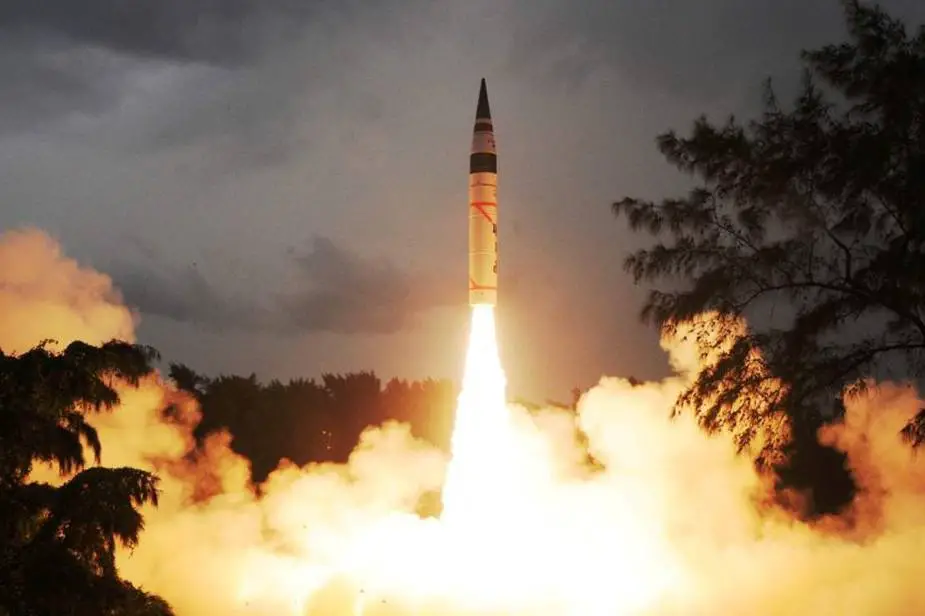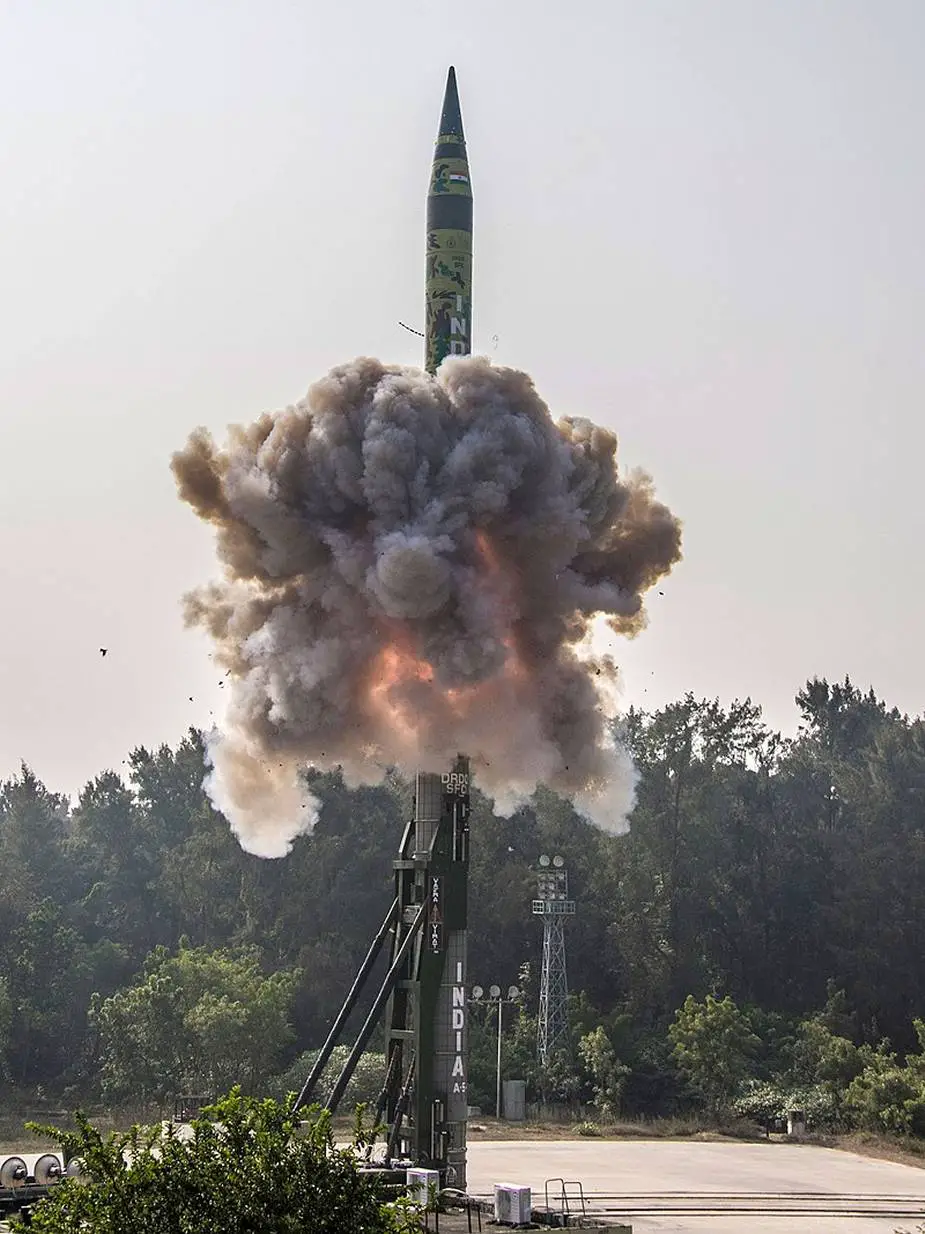Breaking news
India test-fires Agni-5 ICBM capable of carrying nuclear warhead.
On October 27, India tested a ballistic missile capable of carrying a nuclear warhead up to 5,000 kilometers (3,100 miles), the Indian Defense Ministry said, in what media called a “stern signal” to China as the two remain locked in a border spat. As reported by The Defense Post, the missile blasted off from Abdul Kalam Island, off India’s east coast, and splashed into the Bay of Bengal.
Follow Army Recognition on Google News at this link

Test fire of an Agni 5 ICBM (Picture source: Indian MoD)
“The successful test … is in line with India’s stated policy to have ‘credible minimum deterrence’ that underpins the commitment to ‘No First Use’ [of nuclear weapons],” an Indian Defense ministry statement said. The 17-meter-tall missile has been tested several times before, but not at night, and local media said the timing was aimed at sending a signal to Beijing. According to the Times of India, New Delhi is working on enabling the Agni-5 to become MIRV capable (Multi-Independent Re-entry Vehicle), which means it can carry several nuclear warheads aimed at different targets.
Agni-V ("Fire") has been developed by the Defence Research and Development Organisation (DRDO). The missile is said to have a range of between 5,000 and 8,000 km. It is a three-stage, road-mobile and solid-fueled missile which is transported by a truck and launched via a canister.
Until recently, the longest range missile India had was Agni-III, with a range of 3,000–3,500 km. This range was not sufficient to reach targets on the extreme eastern and northeastern regions of China. Most of the important economic centers of China lay on its eastern seaboard.
Senior defence scientist M. Natarajan disclosed in 2007 that DRDO was working on an upgraded version of the Agni III, known as the Agni-V, and that it would be ready in 4 years. The missile was to have a range of more than 5,000 kilometres (3,100 mi). It was initially estimated that the missile would be operational by 2014 to 2015 after four to five repeatable tests, a time scheduled that proved too optimistic. Indian authorities believed that the solid-fuelled Agni-V is more than adequate to meet current threat perceptions and security concerns. Even with a range of only 5,000 km, the Agni-V could hit any target in China, including Beijing.
The missile will allow India to strike targets across Asia and into Europe. The missile's range will allow the Indian military to target all of China from Agni-V bases, in central and southern India, further away from China. The missile is also likely to be similar to other missiles of the range of 10,000 km. The missile was designed to be easy to transport by road, through the utilisation of a canister-launch missile system, which is distinct from those of the earlier Agni missiles. Agni-V would also carry MIRV (multiple independently targetable re-entry vehicles) payloads being concurrently developed. A single MIRV-equipped missile can deliver multiple warheads at different targets.
With a launch mass of around 50 tonnes (49 long tons; 55 short tons) and a development cost of over US$332 million, Agni-V incorporated advanced technologies involving ring laser gyroscope and accelerometer for navigation and guidance. It took its first stage from Agni-III, with a modified second stage and a miniaturised third stage enabling it to fly distance of 5,000 kilometres (3,100 mi). The second and third stages are completely made of composite material to reduce weight. With a canister-launch system to impart higher road mobility, the missile, will give the armed forces much greater operational flexibility than the earlier generation of Agni missiles. According to a source, the accuracy levels of Agni-V and the Agni-IV (3800 km [2,375 mi]), with their better guidance and navigation systems, are far higher than Agni-I (700 km [430 mi]), Agni-II (2,000 km [1,200 mi]) and Agni-III (3,000 km [1,900 mi]). According to the Project Director of Agni V, Tessy Thomas, the missile achieved single-digit accuracy in its second test.

Agni V long-range surface-to-surface Nuclear Capable Ballistic missile launched from a canister on a road-mobile launcher at the Dr. Abdul Kalam Island off the coast of Odisha, on December 10, 2018 (Picture source: Indian MoD)



















